
City of Love: Queers of San Francisco in the 1990s
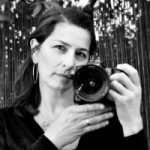
Photographer. Born in New York. Studied photography at the San Francisco Art Institute. Her works have been showcased in exhibitions in the USA and Europe, and also featured in publications such as Rolling Stone, Interview, The Advocate etc.
— I am particularly committed to capturing vibrancy, resilience, tenderness and joy that I see in people, particularly within subcultures marginalized or derided by mainstream society.
I grew up in a family of working artists, gallery owners, and art collectors and I was traditionally trained in photography and art history. I try to edit my work in a way that combines my appreciation for formal art with that of raw documentary photography. All the images in this body of work were shot on 35mm film.
I visited San Francisco in 1990 and loved everything about the city. The people, the scene, the landscape, the gritty urban feel of diverse neighborhoods. San Francisco in the 90’s was a pivotal groundbreaking time. A vibrant era when housing and rent was cheap. Queer youth, outcasts, artists, and free spirits flocked to the city to find one another. The city fostered an inclusive environment for a new generation to thrive.
There was a growing and strong sense of community and collaboration. Bars, clubs, tattoo shops, galleries, cafes, bookstores and women owned businesses emerged. A new wave of feminism embraced gender bending and butch/femme culture in the forefront.
Queer youth, outcasts, artists, and free spirits flocked to the city to find one another.
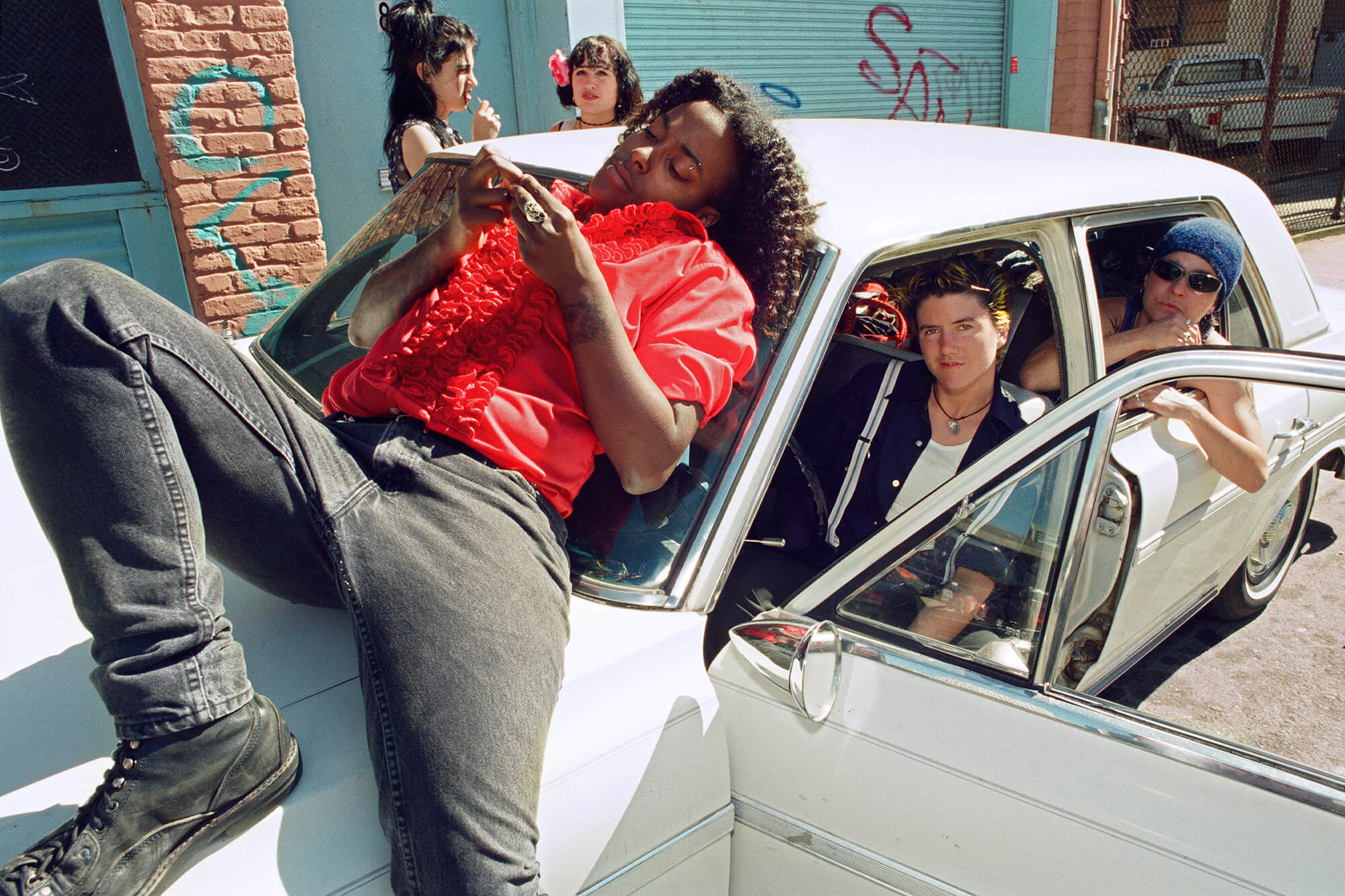
Elitreo and friends, mid-90s

DJ Campbell, Zanne, Junkyard, 1997

Asia and Ace, 1998

Anna Joy and Lala, 1996

Shanna and Leslie, 1993

Ace, 1997

Machiko and Tietjen, 1999

Juanita More and Mr. David, 1999
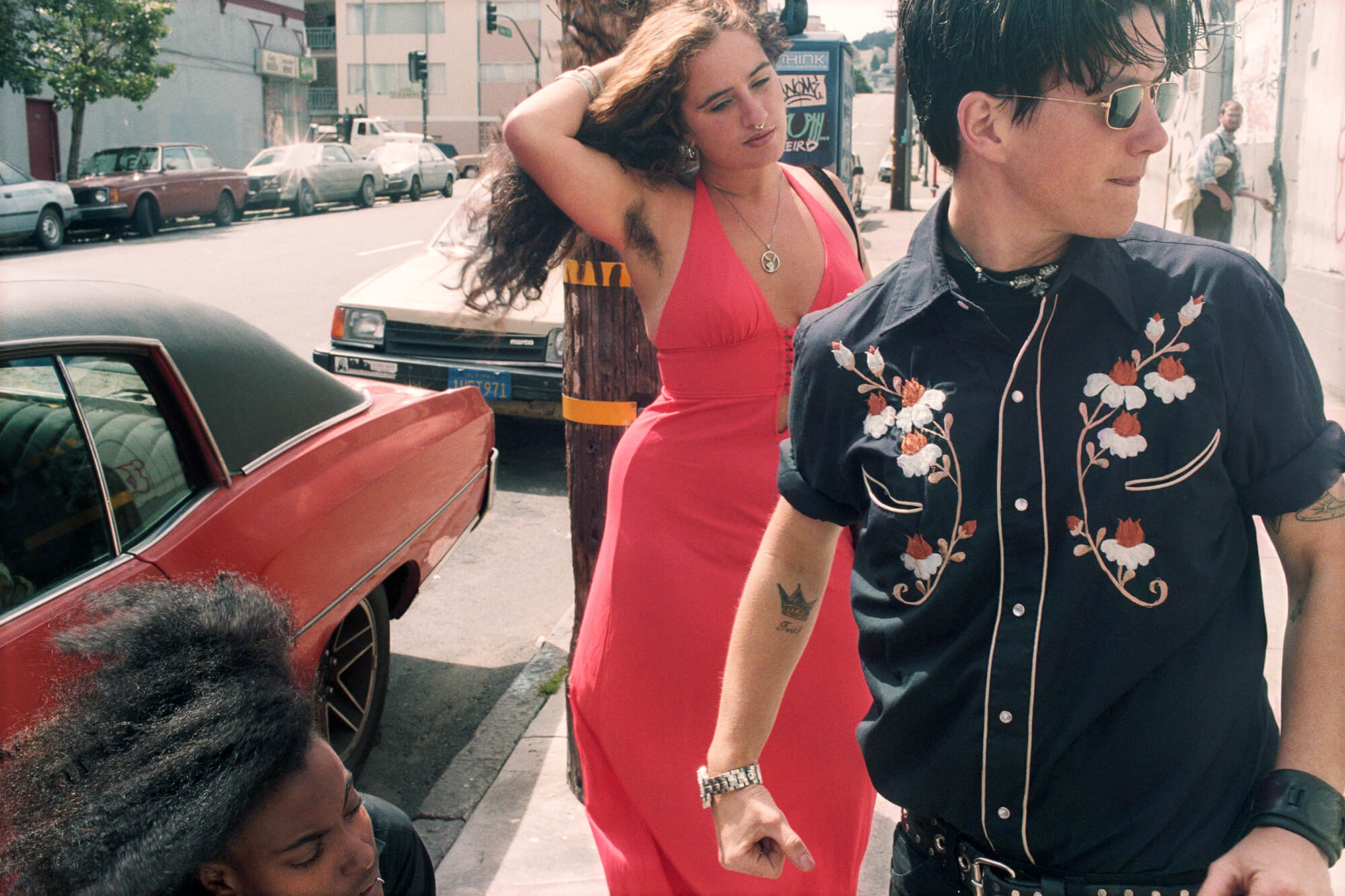
Silas and Asia and Elitreo, 1996

Shoshana, 1999
I always had my camera with me, and I photographed copiously. It was my neighborhood, peers, the places I frequented. There was so much going on at the time. You could leave your flat, walk down the street and always run into friends, join up with people, or have a place to go. A club, event, a show, or place to go most nights of the week. I remember those years fondly, along with the formation of life-long friends. I remember the strong sense of support and a sense of extended family.
This was such a unique time in San Francisco history. The city was a ‘haven’ for gays and lesbians, and people really stuck together to protect each other. I do remember feeling mostly safe, and there is safety in numbers.
Today the city has been very gentrified, there are many people living there only for work, not because they came for the love and security of a welcoming place. Because of that, there is some hostility and tension that I do not remember feeling thirty years ago.
This was such a unique time in San Francisco history. The city was a ‘haven’ for gays and lesbians, and people really stuck together to protect each other.
One of the biggest changes today has been the price increase in rents and housing. Many people were forced out of the city beginning in the early 2000s and dispersed across the country. Many of the businesses opened in the 90’s have since shut down, as people moved away, population and community dispersed, costs increased.
San Francisco is still amazing, but very different from it was 30 years ago. It was a ‘gay mecca’ then and now, but far less gritty and artistic today, since many artists have been forced out due to expensive housing. I do find it sad to witness people being priced out. Working artists and musicians, financially less established communities, have been leaving for a while now. It is different, and their absence leaves a void. A culture void.

Elitreo, 1998

Amita and Sunny, 1998

Tanya and Lisa, 1998

Harry, 1997
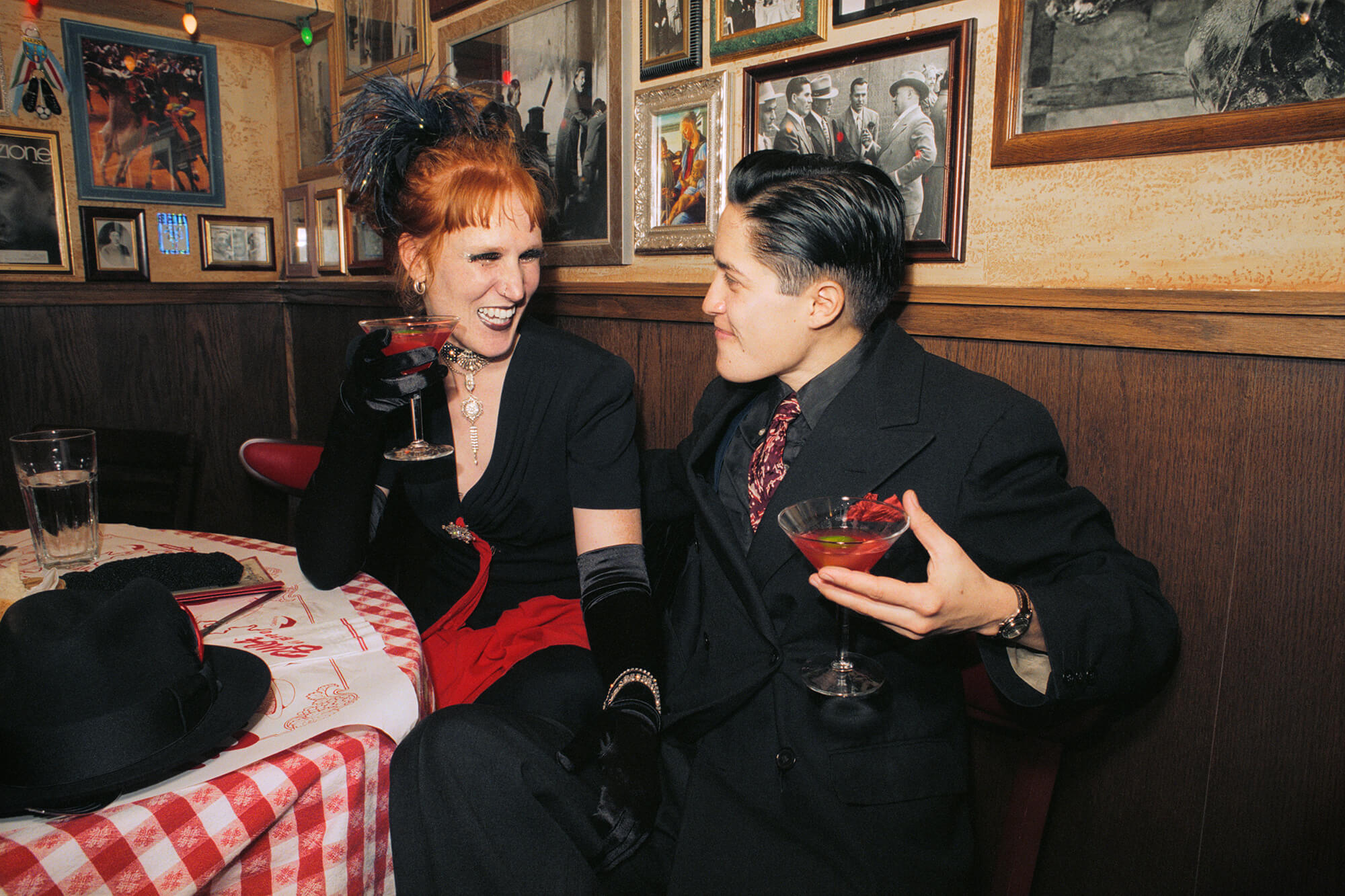
Margaret and Jill, 1998

Steak, 1999

Kristen and Elitreo, 1997
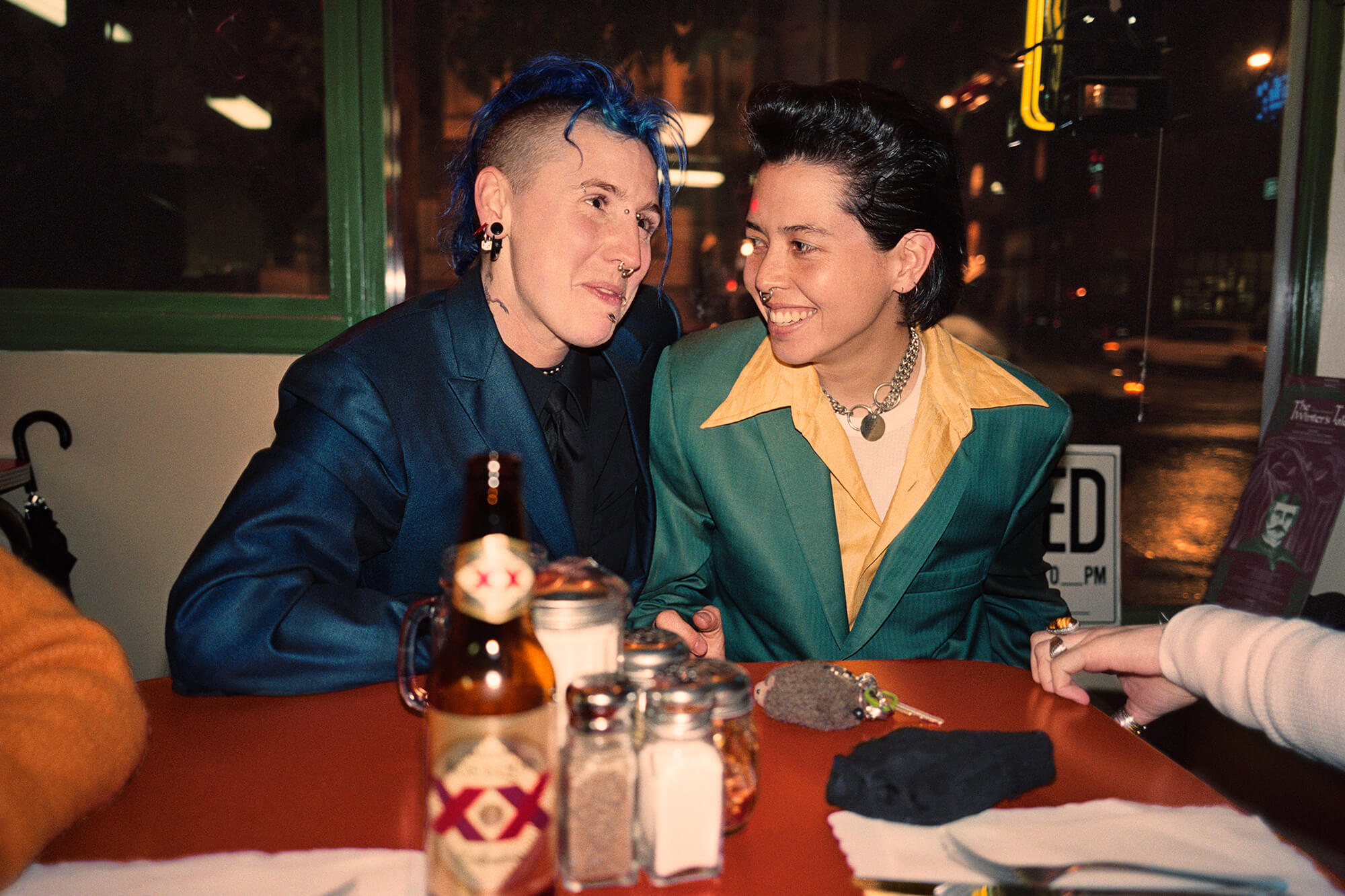
Colt and Malia, 1999

Dancers, 1999

Mary and Dusty, 1998
It is important to have images and writings about queer history available for all generations to see, to create a sense of belonging, self-worth, and help to feel connected to their community. This is the same for everyone, for culture, for religion, for families, etc. Understanding history helps us to form identity.
Looking back at my film I am reminded just how vast the community was, so much was activity relating to gender identity, feminism, politics, inclusiveness, history was being formed, it was groundbreaking.
Today, a generation later, I realize their critical significance as an important piece of history. I hope a new generation can look back, appreciate, and recognized the collective effort, creativity, pride, and defiance that was required to help pave the way for today’s world. My photographs of this era offer visibility to the pulse of the city during this unique time of unapologetic celebration of difference and homecoming.
Today, a generation later, I realize their critical significance as an important piece of history.

Alessandra and Tai, 1994

Colt, 1998

Cooper, Cary, Sini, Daphne, Kelly, 1994
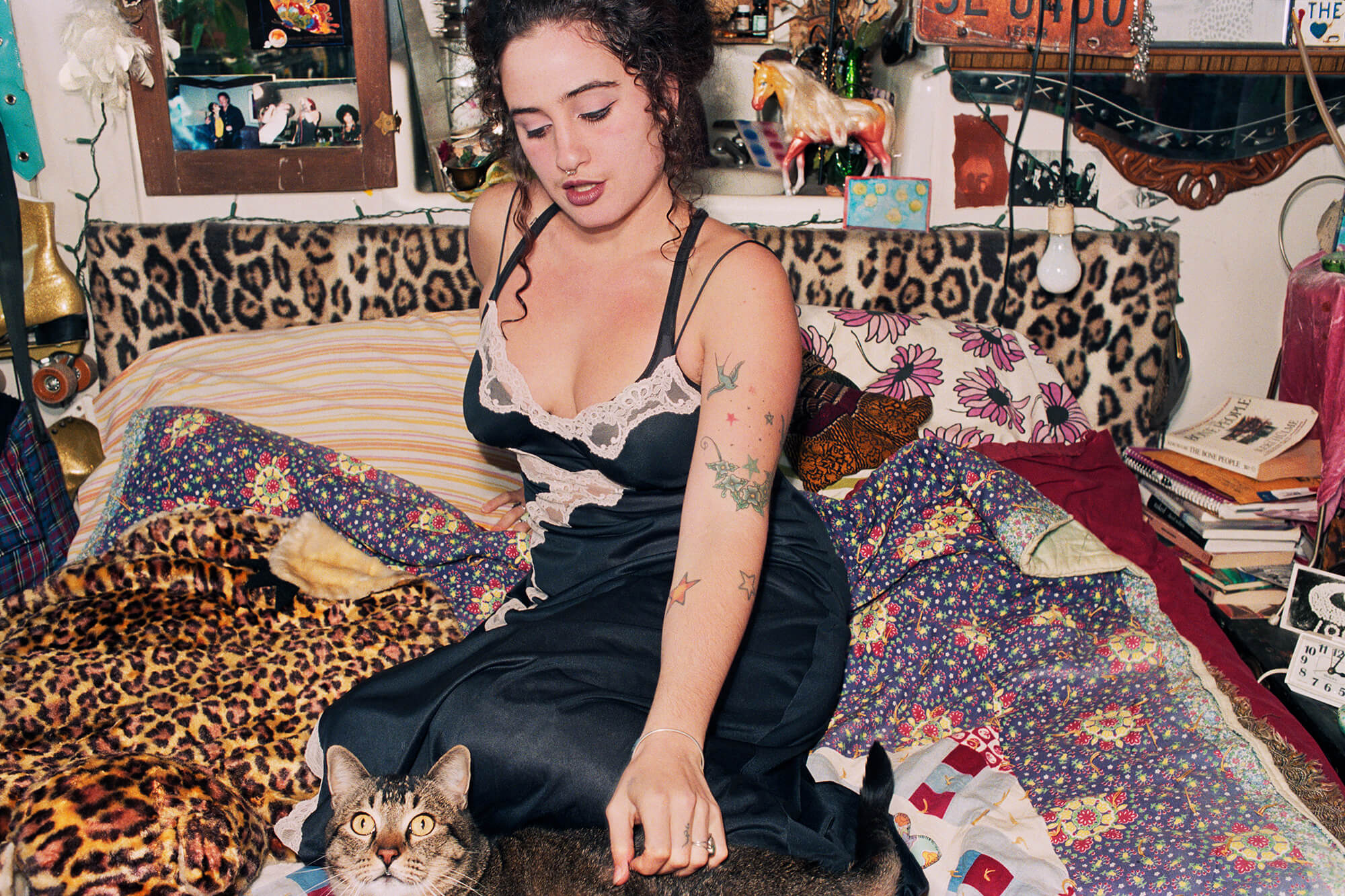
Asia, 1996

Daniel and Miriam, 1996

Quijas and Shanna, 1994

Asia and Quijas, 1994
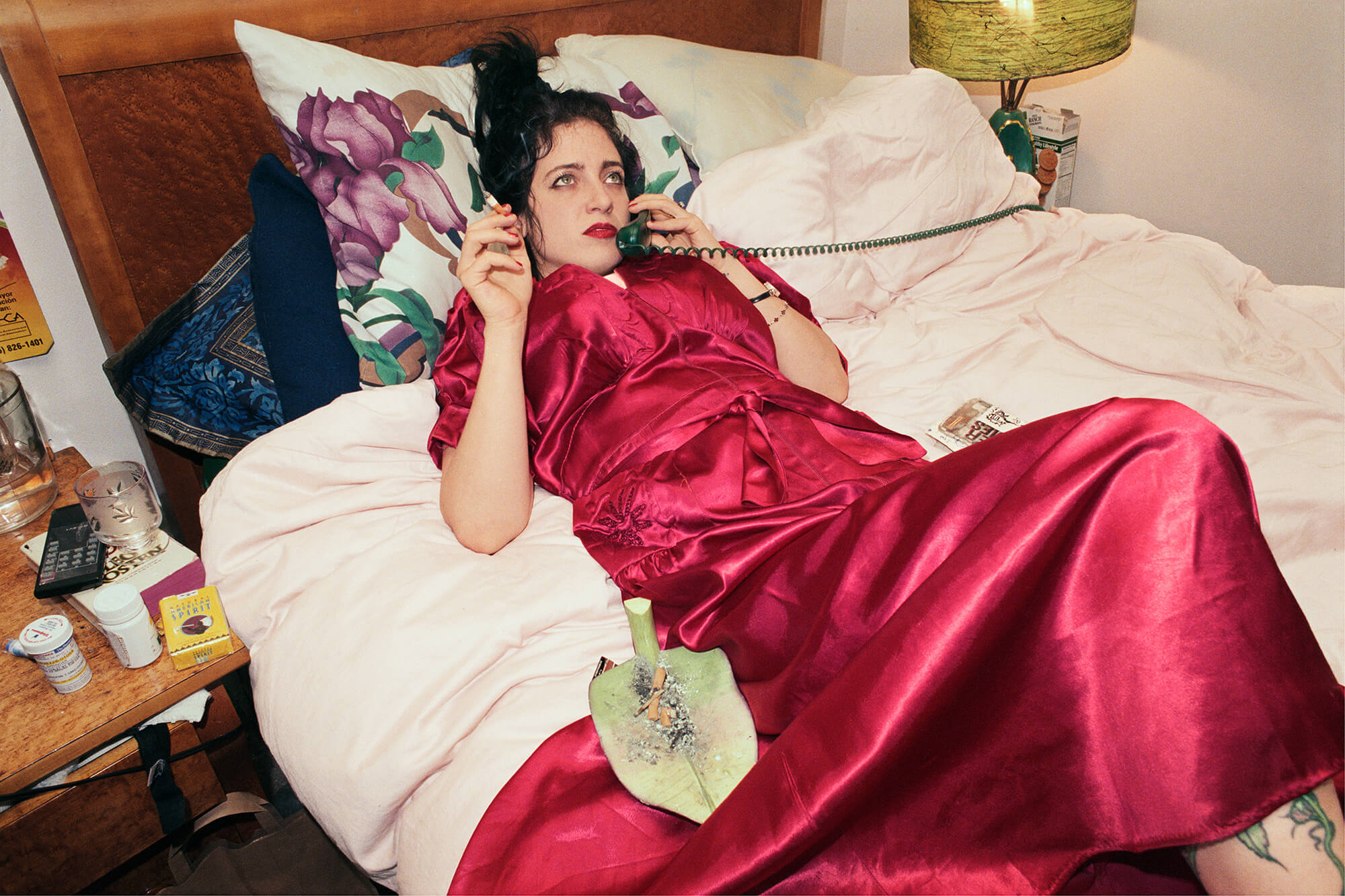
Anna Joy, 1997

Harry and Shanna, 1996

Slade, Leslie, Silas, Keiron, Lynnee, 1997
New and best








